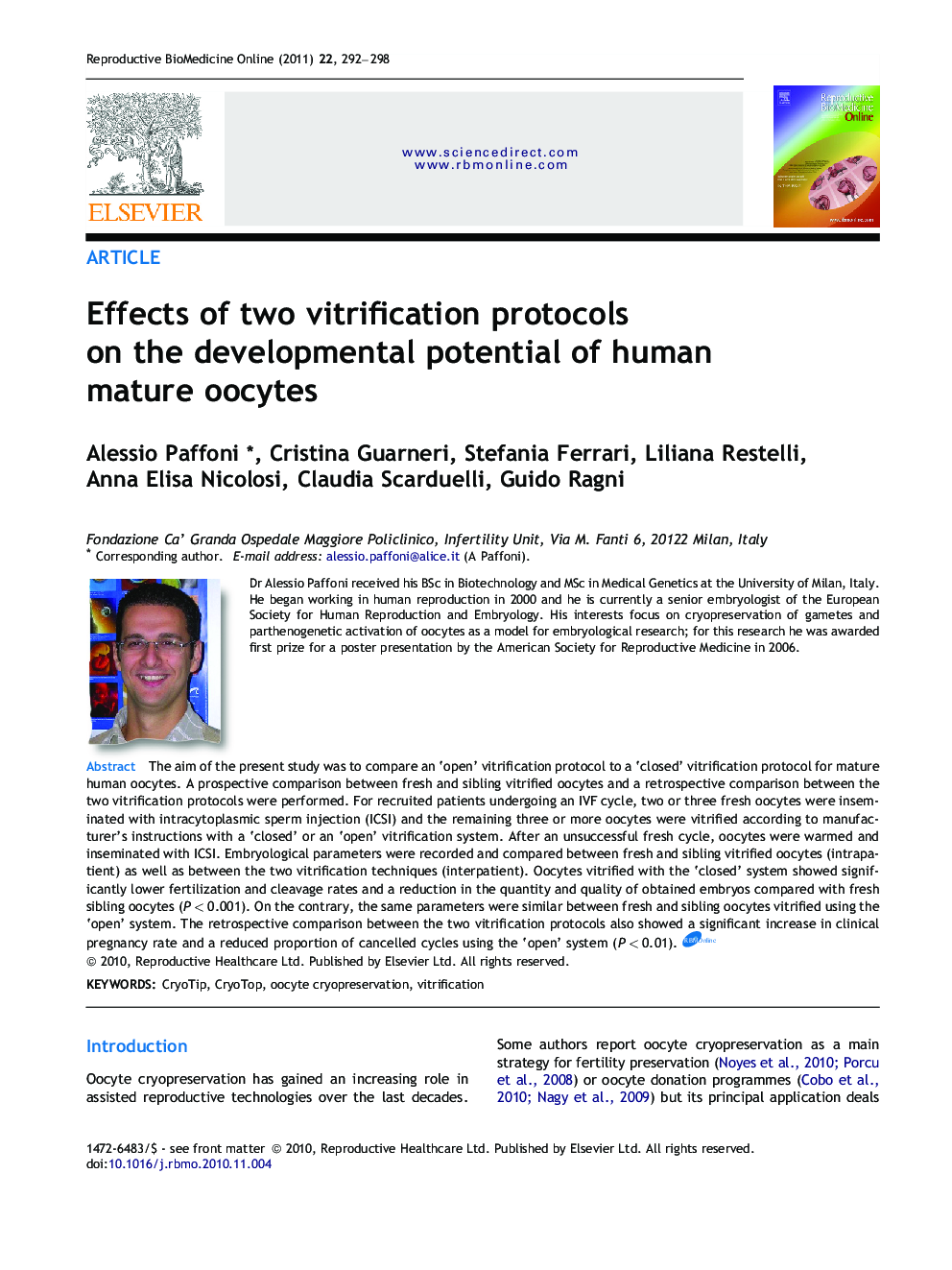| Article ID | Journal | Published Year | Pages | File Type |
|---|---|---|---|---|
| 3970682 | Reproductive BioMedicine Online | 2011 | 7 Pages |
The aim of the present study was to compare an ‘open’ vitrification protocol to a ‘closed’ vitrification protocol for mature human oocytes. A prospective comparison between fresh and sibling vitrified oocytes and a retrospective comparison between the two vitrification protocols were performed. For recruited patients undergoing an IVF cycle, two or three fresh oocytes were inseminated with intracytoplasmic sperm injection (ICSI) and the remaining three or more oocytes were vitrified according to manufacturer’s instructions with a ‘closed’ or an ‘open’ vitrification system. After an unsuccessful fresh cycle, oocytes were warmed and inseminated with ICSI. Embryological parameters were recorded and compared between fresh and sibling vitrified oocytes (intrapatient) as well as between the two vitrification techniques (interpatient). Oocytes vitrified with the ‘closed’ system showed significantly lower fertilization and cleavage rates and a reduction in the quantity and quality of obtained embryos compared with fresh sibling oocytes (P < 0.001). On the contrary, the same parameters were similar between fresh and sibling oocytes vitrified using the ‘open’ system. The retrospective comparison between the two vitrification protocols also showed a significant increase in clinical pregnancy rate and a reduced proportion of cancelled cycles using the ‘open’ system (P < 0.01).The present study is aimed to compare two methods of vitrification of human oocytes. Vitrification procedures represent a heterogeneous group of cryopreservation techniques sharing some principal characteristics such as very high rates of cooling and elevated concentrations of cryoprotective agents. Significant differences can be observed among protocols, especially regarding devices and sample storage systems. Vitrification can be achieved by direct (open system) or indirect (closed system) contact of oocytes with liquid nitrogen. In the present study a comparison between fresh and sibling vitrified oocytes and a comparison between two vitrification protocols were performed. For patient undergoing an IVF cycle, two or three fresh oocytes were inseminated and the remaining three or more oocytes were vitrified according to manufacturer’s instructions with a closed or open vitrification system. After an unsuccessful fresh cycle, oocytes were warmed and inseminated. Embryological parameters were recorded and compared between fresh and sibling vitrified oocytes (intrapatient), as well as between the two vitrification techniques (interpatient). Oocytes vitrified with the closed system compared with fresh oocytes showed a significant reduction in quantity and quality of obtained embryos. On the contrary, the same parameters were similar between fresh and sibling oocytes vitrified using the open system. The retrospective comparison between the two vitrification protocols also evidenced a significant increase in pregnancy rate and a reduced proportion of cancelled cycles using the open system.
